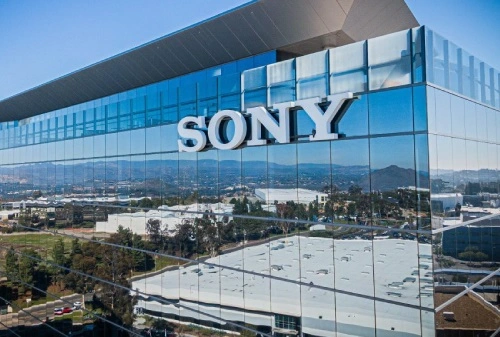Sony Corporation continues to be a formidable entity in the global electronics, gaming, and entertainment industries. A comprehensive SWOT analysis reveals the company’s current strengths, weaknesses, opportunities, and threats.
Strengths
1. Robust Financial Performance: In the third quarter ending September 30, 2024, Sony reported a substantial 69% increase in profit, reaching 338.5 billion yen ($2.2 billion), up from 200 billion yen in the same period the previous year. This growth was driven by strong sales in image sensors, gaming, music, and network services.
2. Innovative Product Launches: Sony introduced the PlayStation 5 Pro on November 7, 2024, priced at $699.99. This all-digital model offers enhanced features, including smoother frame rates, higher display resolutions, and superior ray tracing capabilities, reinforcing Sony’s leadership in the gaming console market.
3. Advancements in Imaging Technology: The launch of the Sony A1 II mirrorless camera in November 2024 showcases Sony’s commitment to professional photography and videography. The camera features a 50.1-megapixel full-frame stacked sensor, capable of shooting 30 frames per second in RAW and up to 8K video at 30p, catering to high-end users.
4. Strategic Diversification: Sony’s venture into the electric vehicle market through the AFEELA 1, developed in collaboration with Honda, Microsoft, and Epic Games, marks a significant diversification. The vehicle integrates advanced AI and entertainment features, positioning Sony at the intersection of technology and mobility.
5. Strong Entertainment Portfolio: Sony’s music division reported robust sales, with successful releases from artists like SZA and David Gilmour. Additionally, the gaming and network services division experienced a 12.3% sales increase, driven by third-party game sales and services like PlayStation Plus.

Weaknesses
1. Challenges in the Pictures Division: Sony’s pictures division faced revenue declines due to production delays caused by the 2023 Hollywood strikes. While offset by higher revenues from platforms like Crunchyroll, these challenges highlight vulnerabilities in content production pipelines.
2. High Pricing Strategy: The PlayStation 5 Pro’s price point of $699.99 has sparked discussions regarding its affordability, potentially limiting its accessibility to a broader consumer base. Balancing advanced features with competitive pricing remains a challenge.
3. Dependence on Hardware Sales: A significant portion of Sony’s revenue is derived from hardware sales, such as gaming consoles and consumer electronics. Market saturation and rapid technological advancements necessitate continuous innovation and adaptation.
4. Integration Challenges in Diversification: Sony’s expansion into the electric vehicle market with the AFEELA 1 introduces complexities related to integrating diverse technologies and meeting automotive industry standards, posing potential operational challenges.
5. Supply Chain Vulnerabilities: Global supply chain disruptions, including semiconductor shortages, can impact Sony’s production schedules and product availability, affecting sales and profitability.
Opportunities
1. Expansion in Electric Vehicles: The AFEELA 1 electric vehicle, developed in collaboration with Honda and other tech partners, positions Sony to capitalize on the growing EV market. Integrating entertainment and AI features offers a unique value proposition.
2. Growth in Subscription Services: The increasing popularity of subscription-based models presents opportunities for Sony to expand services like PlayStation Plus, enhancing recurring revenue streams and customer engagement.
3. Advancements in AI and Imaging: Sony’s expertise in imaging sensors and AI integration can drive innovation in various sectors, including healthcare, autonomous vehicles, and consumer electronics, opening new market avenues.
4. Content Production and Streaming: With the resolution of industry strikes, Sony’s pictures division can resume full-scale production, leveraging its strong content library and exploring partnerships with streaming platforms to reach wider audiences.
5. Sustainability Initiatives: Emphasizing eco-friendly practices and products can enhance Sony’s brand image and appeal to environmentally conscious consumers, aligning with global sustainability trends.
Threats
1. Intensifying Competition: The consumer electronics and gaming industries are highly competitive, with companies like Microsoft and Nintendo continually innovating, potentially impacting Sony’s market share.
2. Economic Uncertainties: Global economic fluctuations can affect consumer spending on discretionary items like electronics and gaming consoles, influencing Sony’s sales performance.
3. Regulatory Challenges: Navigating varying international regulations, especially in new ventures like electric vehicles, can introduce compliance complexities and potential delays.
4. Technological Disruptions: Rapid technological changes require continuous investment in research and development. Failure to anticipate and adapt to new technologies could render Sony’s products obsolete.
5. Cybersecurity Risks: As a technology-driven company, Sony faces threats from cyberattacks that could compromise sensitive data, disrupt operations, and damage its reputation.
Conclusion
In 2025, Sony Corporation demonstrates resilience and innovation across its diverse business segments. The company’s robust financial performance, driven by strong sales in gaming, music, and imaging technologies, underscores its market leadership. Strategic product launches, such as the PlayStation 5 Pro and the AFEELA 1 electric vehicle, highlight Sony’s commitment to innovation and diversification.














